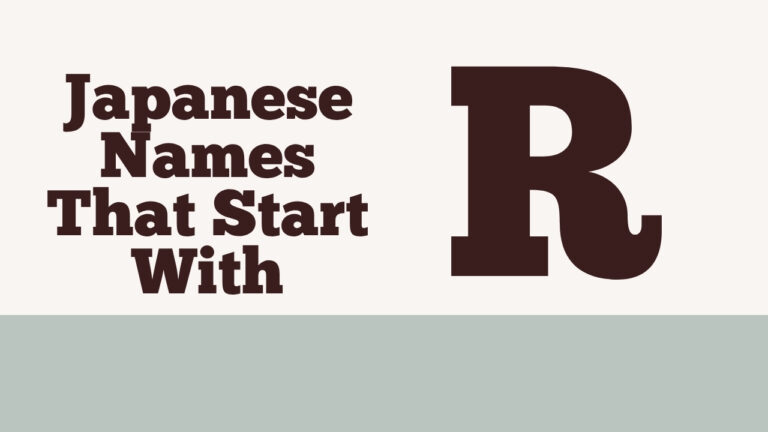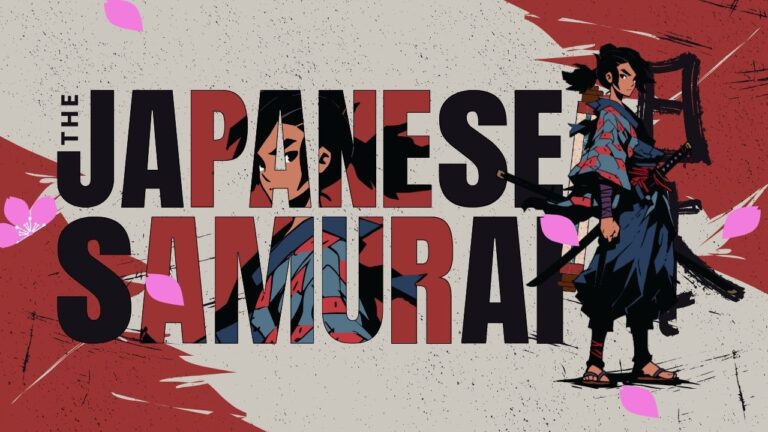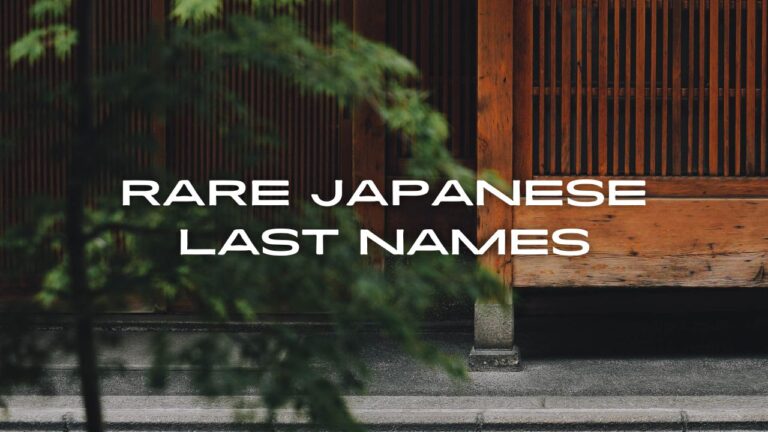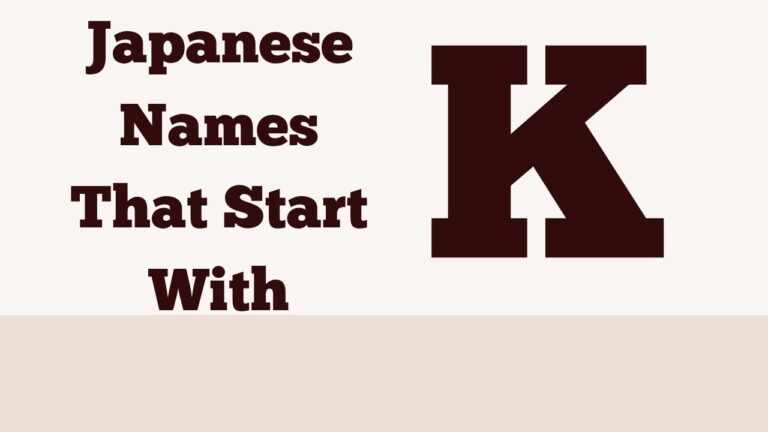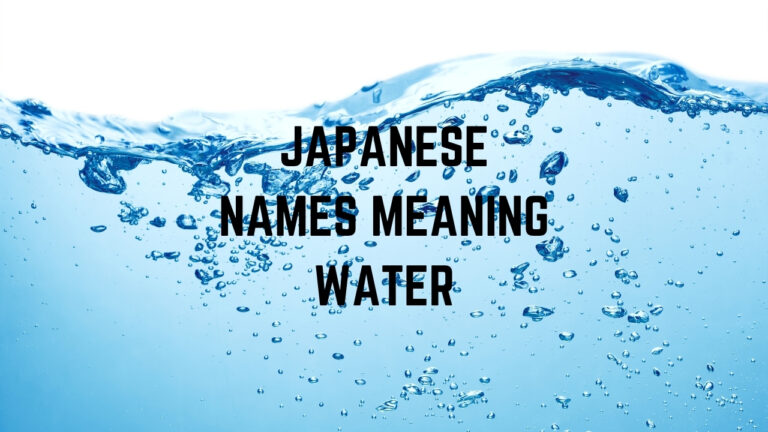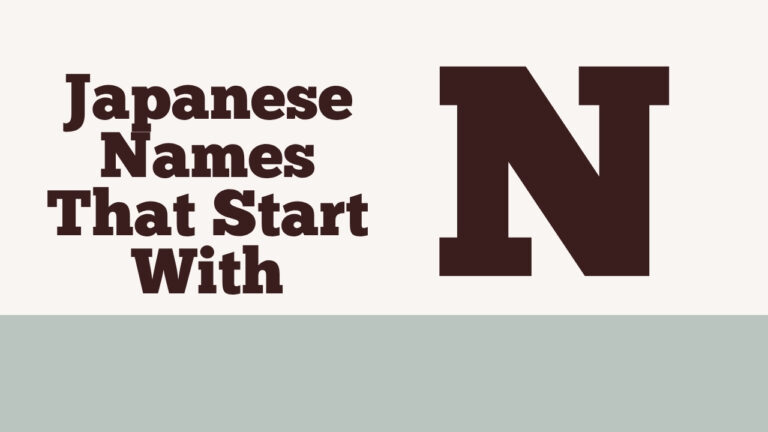100+ Japanese Blade Names | Katana, Tanto & More
Japan’s rich history of craftsmanship and warrior culture has given rise to some of the most iconic and respected weapons in the world. Among these, Legendary Japanese sword names hold a special place for their elegance, strength, and symbolism.
From the famous katana sword, known for its sharpness and graceful curve, to the shorter yet equally revered Wakizashi, these weapons were more than tools—they were symbols of honor for the samurai. In this guide, we explore Japanese blade names and meanings, tracing the legacy of famous samurai blades that continue to fascinate historians, collectors, and martial arts enthusiasts worldwide.
Also Read:125+ japanese samurai names
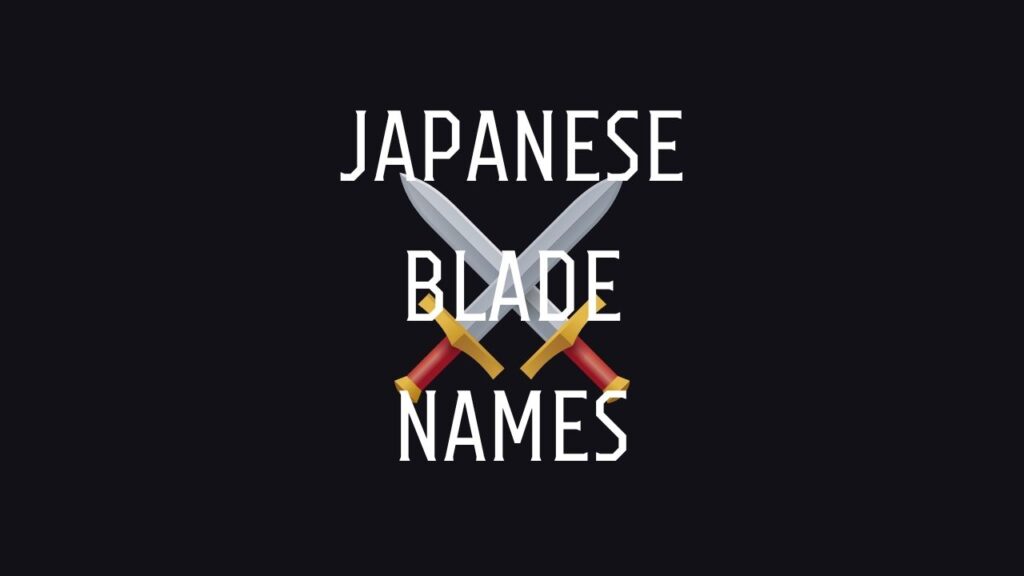
Cool Japanese Blade Names
- Tensei (天星) – “Heavenly Star”
- Kurogane (黒鋼) – “Black Steel”
- Shirohane (白羽) – “White Feather”
- Raijin (雷神) – “Thunder God”
- Kagehikari (影光) – “Shadow Light”
- Ryūjin (龍刃) – “Dragon Blade”
- Hōōmaru (鳳凰丸) – “Phoenix Circle”
- Shinsetsu (真雪) – “Pure Snow”
- Kurogiri (黒霧) – “Black Mist”
- Hikari no Yaiba (光の刃) – “Blade of Light”
- Seiryuuken (青龍剣) – “Azure Dragon Sword”
- Yūrei (幽霊) – “Phantom”
- Fubuki (吹雪) – “Snowstorm”
- Kazan (火山) – “Volcano”
- Byakko (白虎) – “White Tiger”
- Tengokuken (天国剣) – “Heavenly Sword”
- Akatsuki (暁) – “Dawn”
- Inazuma (稲妻) – “Lightning”
- Kurotsurugi (黒剣) – “Black Sword”
- Hibana (火花) – “Spark”
- Shinkirō (蜃気楼) – “Mirage”
- Yamiyo (闇夜) – “Dark Night”
- Kenshō (剣昇) – “Sword Rising”
- Tetsuga (鉄牙) – “Iron Fang”
- Gekkōmaru (月光丸) – “Moonlight Circle”
Unique Japanese Blade Names
- Tsukikage (月影) – “Moon Shadow”
- Shiranui (不知火) – “Mysterious Fire”
- Kitsunebi (狐火) – “Fox Fire”
- Hiryūken (飛龍剣) – “Flying Dragon Sword”
- Yamitsuki (闇月) – “Dark Moon”
- Shōrinken (勝利剣) – “Victory Sword”
- Kogarashi (木枯し) – “Winter Wind”
- Renshō (連勝) – “Unbroken Victory”
- Kumogiri (雲切) – “Cloud Cutter”
- Shinsei (神聖) – “Divine Purity”
- Raitetsu (雷鉄) – “Thunder Iron”
- Hoshizora (星空) – “Starry Sky”
- Engetsuken (円月剣) – “Full Moon Blade”
- Oborozuki (朧月) – “Hazy Moon”
- Arashi no Yaiba (嵐の刃) – “Blade of the Storm”
- Suiryū (水龍) – “Water Dragon”
- Gin’yoku (銀翼) – “Silver Wing”
- Reikonmaru (霊魂丸) – “Spirit Circle”
- Hizakura (緋桜) – “Crimson Cherry Blossom”
- Yūgiri (夕霧) – “Evening Mist”
- Kazekiba (風牙) – “Wind Fang”
- Shikkoku (漆黒) – “Jet Black”
- Seigetsu (清月) – “Clear Moon”
- Kōrin (光輪) – “Radiant Halo”
- Hōrōken (放浪剣) – “Wandering Sword”
Ancient Japanese Blade Names
- Murakumo (叢雲) – “Gathering Clouds”
- Futsunomitama (布都御魂) – “Sacred Spirit Sword”
- Ame-no-Habakiri (天羽々斬) – “Heavenly Feather Cutter”
- Kusanagi (草薙) – “Grass-Cutting Sword”
- Totsuka no Tsurugi (十束剣) – “Sword of Ten Handbreadths”
- Hachimanmaru (八幡丸) – “Hachiman’s Circle”
- Shichiseiken (七星剣) – “Seven Star Sword”
- Onimaru (鬼丸) – “Demon Circle”
- Hōken (宝剣) – “Treasure Sword”
- Chidōken (地動剣) – “Earth Tremor Sword”
- Amanomurakumo (天叢雲剣) – “Heavenly Cloud Gathering Sword”
- Iwakiri (岩切) – “Rock Cutter”
- Tenguken (天狗剣) – “Tengu Sword”
- Yatsurugi (八剣) – “Eight Blades”
- Seiken (聖剣) – “Holy Sword”
- Rokukenshin (六剣神) – “Six Blade Gods”
- Magatsunokami (禍津神剣) – “Sword of the Calamity God”
- Shinryūken (神龍剣) – “Divine Dragon Sword”
- Takamagahara no Ken (高天原の剣) – “Sword of the High Heavens”
- Yamatotsurugi (大和剣) – “Great Yamato Sword”
- Aokikiba (青鬼牙) – “Blue Oni Fang”
- Okamitachi (狼太刀) – “Wolf Longsword”
- Kōjinmaru (荒神丸) – “Fierce God Circle”
- Hikaru no Ken (光の剣) – “Sword of Light”
- Mikazukiken (三日月剣) – “Crescent Moon Sword”
Popular Japanese Blade Names
- Tora no Yaiba (虎の刃) – “Tiger’s Blade”
- Kōryūken (光龍剣) – “Light Dragon Sword”
- Shinku no Tsurugi (真紅の剣) – “Crimson Sword”
- Yūsha no Ken (勇者の剣) – “Hero’s Sword”
- Kazanmaru (火山丸) – “Volcano Circle”
- Shidenken (紫電剣) – “Violet Lightning Sword”
- Kurokiba (黒牙) – “Black Fang”
- Hōyōken (抱擁剣) – “Embrace Sword”
- Tenbatsu (天罰) – “Divine Punishment”
- Ginrinki (銀輪輝) – “Shining Silver Ring”
- Hoshiken (星剣) – “Star Sword”
- Akebono (曙) – “Daybreak”
- Kirisame (霧雨) – “Misty Rain”
- Mugen no Yaiba (無限の刃) – “Blade of Infinity”
- Ryūkiba (龍牙) – “Dragon Fang”
- Sakura no Tsurugi (桜の剣) – “Cherry Blossom Sword”
- Kazanokiba (風牙) – “Wind Fang”
- Tetsumaru (鉄丸) – “Iron Circle”
- Shinkōken (信仰剣) – “Sword of Faith”
- Raimeiken (雷鳴剣) – “Thunder Roar Sword”
- Kurohane (黒羽) – “Black Feather”
- Seiryūmaru (青龍丸) – “Blue Dragon Circle”
- Hōyō no Tsurugi (抱擁の剣) – “Sword of Embrace”
- Shōriken (勝利剣) – “Victory Blade”
- Getsumenken (月面剣) – “Moon Surface Sword”
Conclusion
Japanese blade names carry centuries of history, symbolism, and craftsmanship. From mythical swords to elegant katana passed down through generations, each name reflects unique qualities and cultural significance.
Whether rooted in legend, inspired by nature, or representing the spirit of the samurai, these names remind us of Japan’s enduring connection to honor, tradition, and artistry.
FAQs
- What materials were traditionally used to forge Japanese blades?
Traditional Japanese blades were crafted using a combination of high-carbon steel (tamahagane) and low-carbon steel, folded repeatedly to enhance strength and flexibility. - How is a katana different from other Japanese swords?
The katana is known for its curved, single-edged blade and is often longer than swords like the wakizashi. It was favored by samurai for its balance, sharpness, and cutting power. - What role did Japanese blades play in samurai culture?
Blades were considered an extension of a samurai’s soul, representing honor, loyalty, and martial skill. They were more than weapons—they were symbols of status and discipline. - Are Japanese blades still made using traditional techniques today?
Yes, skilled swordsmiths in Japan continue to forge blades using ancient methods, though these swords are often ceremonial, collectible, or used in martial arts demonstrations rather than combat. - Why are some Japanese blades associated with mythical stories?
Many legendary blades are tied to folklore or spiritual beliefs, symbolizing divine power, protection, or significant historical events. - What is the process called when folding steel to make a Japanese blade?
The process is known as orikaeshi tanren, where steel is folded and hammered multiple times to remove impurities and create a strong, layered blade. - Can modern collectors legally own authentic Japanese swords?
Yes, but owning antique or newly-forged swords in Japan and abroad often requires proper registration and adherence to strict cultural preservation laws.

